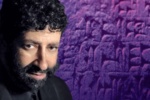Christians today are discovering the wonder of Jordan, a nation just east of Israel that is rich in religious history and spiritual significance.
God’s people have been traveling to Jordan for thousands of years. Charisma sent Diana Scimone to this amazing country to find out what today’s believers can see and do in the “other Holy Land.”
Day 1: Arrival in Amman, Jordan
It’s dusk when our nonstop flight from New York lands at Jordan’s Queen Alia International Airport. We’re the very latest among a caravan of travelers who’ve come here through the ages. Jesus, John the Baptist, Elijah, Moses and about 2 million children of Israel all spent time in Jordan. We’re in good company as we begin our visit to this beautiful land.
Day 2: Northern Jordan
“A huge part of the Old Testament took place on this side of the Jordan River,” our guide, Omar, tells us. The sun is barely up as we leave modern Amman (Deut. 3:11) and head for the northern tip of Jordan. We make a quick stop at the Jabbok River, where Jacob wrestled with an angel (Gen. 32:22-32), and then continue to the area once known as the Roman Decapolis or “10 cities” (Matt. 4:25; Mark 7:31).
Jesus spent much time here, and I can see why; it’s a spectacular place overlooking the Sea of Galilee and the Golan Heights. We visit the ancient Decapolis city of Gadara, where Jesus cast spirits out of the Gadarene demoniac and sent them into a herd of pigs that headed over a cliff into the Sea of Galilee (Matt. 8:28-32). It’s so beautiful here that none of us want to leave, but Omar has lots more on the itinerary.
I’m not normally a big fan of ruins, but our next stop, Jerash, is amazing—perhaps the best-preserved Greco-Roman city in the world. Also known as Gerasa (Mark 5:1; Luke 8:26), it’s a city unto itself and very well-preserved with temples, plazas, 15 Byzantine churches, an amphitheater and a hippodrome, where we watch gladiators re-create ancient chariot races.
Later, back in Amman, we dine on locally grown food at Wild Jordan Café. It happens to be my birthday, which I celebrate with a Jordanian carrot cake and steaming cups of tea perfumed with sage and thyme.
Day 3: Madaba and Mount Nebo
Morning begins around 5 o’clock as the Muslim call to prayer, broadcast from mosques all over the capital, echoes in the still night. I stand at my window and watch the lights of the King Abdullah Mosque, and I pray for this city and nation, that the 5.5 million Muslims here would know the love and acceptance of the one true God.
Jordan also has about 36,000 Christians, and some believe the Christian church here is the oldest on earth. More recent arrivals are refugees from Iraq—between 500,000 and 1 million of them. Jordan has always been known as a country of refuge (Num. 35:14; Deut. 4:41) and is proud of its efforts to help in spite of the tremendous strain on the country’s infrastructure. (Where do you find room in your schools for a quarter million children, for example?)
We leave Amman and travel south along the 5,000-year-old King’s Highway (Num. 20:17) to the ancient—and still thriving—city of Madaba (called Medeba in the Bible). Here, David fought against the Moabites (this was part of their kingdom), Moab rebelled against Israel (1 Chr. 19:7), and Isaiah prophesied against Moab (Is. 15:2).
Later, Madaba became a prosperous Christian center and produced some of the world’s finest mosaics, which we see in the Church of Saint George. The crown jewel among them is a sixth century mosaic map of Jerusalem and the Holy Land—the earliest map of the Holy Land of any type to survive from antiquity. The colors are still bright after 15 centuries.
It’s time for lunch, and we head for Haret Jdoudna (“House of Our Grandfathers”), a restaurant owned by Omar’s friends. All Jordanian meals begin with mezzas—plate after plate of hot and cold appetizers: hummus, tabbouleh, Arabic salad, baba ganouj, and on and on. There must be 10 plates covering the table.
“Don’t fill up on the mezzas,” Omar warns, but we can’t imagine more food is coming. It is. Enormous platters of roasted chicken, lamb and beef hide between paper-thin layers of pita bread. Fantastic.
Our energized group is ready for more, and we continue south along the plains of Moab. Late in the afternoon, we arrive at Mount Nebo (Deut. 32:48-52; 34:1-8). About 3,400 years ago, another traveler arrived here, but his journey was slightly longer and more arduous than ours. Moses traveled for 40 years to get here and had to put up with the ornery children of Israel along the way. When he arrived at this spectacular site, God showed him the grandeurs of the promised land—and announced he would not set foot in it.
The view from the top is magnificent, and we watch the sun set over the Dead Sea and the promised land of Israel beyond.
Day 4: Petra
Petra has long been on my list of places to see—and today my dream will come true. Petra was one of the greatest trading centers in the Middle East and is mentioned in the Old Testament under several possible names, including Sela and Joktheel (2 Kin. 14:7). Today it is a UNESCO world heritage site that was featured in Steven Spielberg’s movie Indiana Jones and the Last Crusade. More recently, it was chosen as one of the seven new wonders of the world.
By 8 a.m., our group is at the entrance gate, and once inside, the magic begins. It’s like walking along the floor of the Grand Canyon, except there is a complete city carved out of the multicolored rocks all around us. One moment we’re in a desert landscape with homes, shops and tombs carved out of the rocks in the distance. The next, we’re in a narrow gorge with 10-story rocks towering above us.
Petra, part of ancient Edom, was the capital of the kingdom of the Nabateans, who controlled the ancient trade routes that crisscrossed this part of the Middle East. Moses and the Israelites stopped here during the Exodus (Num. 20:10-11), and Aaron is buried here. The wise men undoubtedly stopped here on their journey to see the Christ child.
Later, when Christianity spread across the Byzantine Empire, Petra became an important Christian center, and some of the monuments were converted to churches. After lunch, I hike 850 steps—slippery, narrow and sand-covered—to one such monastery. On either side of me are cliffs, and if that’s not enough, I have to share the steps with donkeys carrying passengers who made the death-defying decision to put their lives in the hands of beasts that have no understanding of the term “right of way.”
Finally, I reach the top, and the view is breathtaking. Today’s modern traders—Bedouins—are everywhere, and there is no end of opportunity to buy their necklaces, beads and baubles.
I make my way back down the treacherous steps, and as dusk arrives, I opt for a camel ride back to the main entrance. Most visitors are gone by now, and only the Bedouins are left, dressed in their ancient colorful garb, riding camels as if they’ve been doing it for 3,000 years. I close my eyes, and it’s as if I’ve stepped back in time thousands of years.
That evening, our exhausted group dines at Petra Kitchen, where we help cook popular Arabic dishes under the guidance of local chefs. Later, we visit a shop selling handicrafts made by women’s micro-enterprises launched by the Noor Al Hussein Foundation. Queen Noor is the American-born wife of the late King Hussein, and she is well-loved in this country for her work helping poor women learn to support themselves through their artistry. I buy an embroidered shawl made of lacy strands of camel’s hair.
Day 5: Wadi Rum
What could top Petra? Wadi Rum comes close. This is part of the same desert in which Moses and the children of Israel wandered for 40 years. Many millennia later, T.E. Lawrence traveled here and described the amazing landscapes as “vast, echoing, and God-like.” In fact, the 1962 movie about his life, Lawrence of Arabia, was filmed here.
We rent open-air jeeps and tear through the sweeping desert landscape at lightning speed. There are no roads, speed limits or traffic cops—or any other humans for that matter—just miles of sand and spectacular rock formations.
Where do you stop for lunch in the desert? At a Bedouin camp, of course. We dine in tents of black goat hair (Song 1:5).
That night we stay in Aqaba, Jordan’s resort on the Red Sea. The coral reefs here are among the best in the world. Aqaba was a major port for the ancient trading routes, and archeologists have recently uncovered the oldest dated Christian church in the world.
Day 6: Bethany Beyond the Jordan
Today we travel in 12 hours a distance it took the children of Israel nearly 40 years to navigate. We try to keep the grumbling to a minimum so we don’t share their fate. Manna is wonderful, but we prefer mezzas.
In Aqaba, we are as far south as it’s possible to go in Jordan, so we turn around and head north along the King’s Highway. We stop at Mukawir (Machaerus), Herod’s hilltop fortress, where John the Baptist was imprisoned and beheaded (Matt. 4:12; 14:3-12).
This is one of Herod’s two mountaintop palaces along the Dead Sea (the other is Masada, in Israel). Herod may have been a maniacal leader, but he had an eye for real estate. The view from the top is beautiful.
Today the Jordan River and the Dead Sea divide Jordan and Israel. Jordan’s top holy site is on the eastern shore of the river: Bethany Beyond the Jordan, where the Bible says John baptized Jesus.
No one knows the exact spot along the river, of course, but the Bible does say it was in “Bethany beyond the Jordan” (John 1:38, NASB), which would indicate it was on the Jordan side of the river. There are other sites with their own claims to fame, and we will never know for sure which is “the” site—but this peaceful spot could well be it.
Most visitors are surprised that the Jordan is not a massive river but a small stream. We could probably throw a stone across it—and could even wade over to the Israeli side, were it not for watchful soldiers on both sides of this international boundary. Jordan has a peace treaty with Israel and doesn’t want any international incidents as a result of exuberant, newly baptized faithful who decide on the spur-of-the-moment to visit Israel.
Day 7: Dead Sea
The northern tip of the Dead Sea (which the Bible also calls the Salt Sea, the Sea of Arabah and the Eastern Sea) is just 35 miles east of Jerusalem, and many biblical events took place in this area. Nearby are Tell al-Kharrar, where John the Baptist preached and baptized (Luke 3:3), Elijah ascended to heaven in a chariot of fire, and Elisha received his mantle (2 Kin. 2:13); the Valley of Salt, where David killed 18,000 Edomites (2 Sam. 8:13), and Zoar, where Lot and his daughters fled after the destruction of Sodom and Gomorrah (Gen. 14:2; 19:26).
The Jordan River flows into the Dead Sea, and since this is the lowest point on earth (1,378 feet below sea level), the water cannot flow out. It’s also the deepest lake in the world. The water is filled with minerals that have healing properties, and as it evaporates, the atmosphere has a high oxygen content. It’s no wonder this is the world’s largest open-air spa. Just breathing the air is healthy.
We spend the day slapping Dead Sea mud on ourselves (it also has healing properties) and experiencing the nowhere-else-on-earth sensation of floating in water with 30 percent salinity (eight times saltier than the ocean). The high salt content makes it impossible not to float; it’s as if the water is pushing us up.
It’s our last evening in Jordan. We sit outside under the same stars that shone on Moses, David and Jesus. In one week, we’ve traveled back in time more than 5,000 years. It has been a journey well worth taking.
Diana Scimone is a journalist who has traveled to more than 40 countries. She is author of Adventures With PawPaw, a children’s travel book series (adventureswith pawpaw.com) and president of PawPaw’s Pals Inc., which works to stop child trafficking around the world (pawpawspals.org).






Leave a Comment
You must be logged in to post a comment.